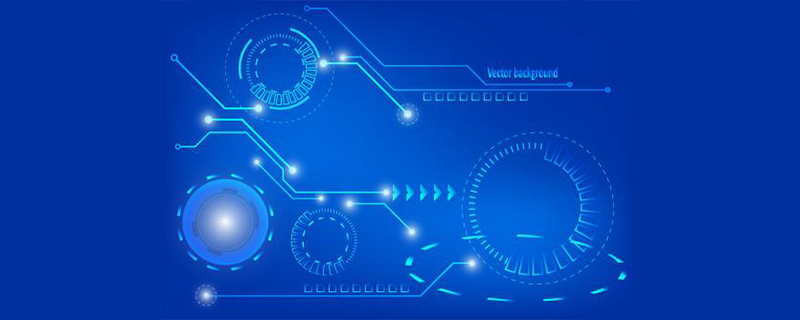Basic principles of software design
System software is a system that controls and coordinates computers and external devices, supports the development and operation of application software, and is a collection of various programs that do not require user intervention. The main function is to schedule, monitor and maintain computer systems, and is responsible for managing various independent hardware in the computer system so that they can work in harmony.

##Introduction to software design principles (Recommended learning: PHP video tutorial)
So, it can be said that the software system is a bridge connecting requirements analysis, hardware systems and system implementation. When designing software, one should first understand the design principles of software design.Design Principles
(1) Reliability
As the scale of software systems becomes larger and more complex, its reliability It’s getting harder and harder to guarantee. The application itself has increasingly higher requirements for the reliability of system operation. The reliability of the software system is also directly related to the reputation of the design itself and the competitiveness of survival and development. Software reliability means the software's ability to avoid possible failures during test runs and its ability to resolve and eliminate failures once they occur. The essential difference between software reliability and hardware reliability is that the latter is caused by the decay and aging of physical mechanisms, while the former is caused by errors in design and implementation. Therefore, the reliability of software must be determined in the design stage, and it is difficult to consider it in the production and testing stages.(2) Robustness
Robustness, also known as robustness, means that the software can determine that the input does not meet the specification requirements for inputs other than those required by the specification. and have reasonable handling methods. Software robustness is a relatively vague concept, but it is a very important external measurement standard for software. The robustness of software design directly reflects the level of analysis, design and coding personnel.(3) Modifiability
requires the software to be designed in a scientific way so that it has a good structure and complete documentation, and the system performance is easy to adjust.(4) Easy to understand
The understandability of software is the prerequisite for its reliability and modifiability. It is not just a question of clear and readable documents, but also requires that the software itself has a simple and clear structure. This largely depends on the designer's insight and creativity, as well as a thorough grasp of the design object. Of course, it also relies on the appropriate use of design tools and methods.(5) Simple program
(6) Testability
Testability is to design an appropriate data Collection, used to test the established system and ensure that the system is fully inspected.(7) Efficiency
The efficiency of software is generally measured by the execution time of the program and the memory capacity occupied. On the premise of meeting the functional indicators required by the principle, the shorter the time required for the program to run and the smaller the storage capacity occupied, the higher the efficiency.(8) Standardization principle
is structurally open, based on industry open standards, and complies with the specifications of the country and the Ministry of Information Industry.(9)Advancedness
Meet customer needs, the system performance is reliable and easy to maintain.(10) Scalability
After the software is designed, there should be an upgrade interface and upgrade space. Open for extension, closed for modification.(11) Security
Security requires that the system can maintain user information, operations and other security requirements, and the system itself must also be able to repair and process in a timely manner Various security vulnerabilities to improve security performance. For more PHP-related technical articles, please visit thePHP Graphic Tutorial column to learn!
The above is the detailed content of Basic principles of software design. For more information, please follow other related articles on the PHP Chinese website!

Hot AI Tools

Undresser.AI Undress
AI-powered app for creating realistic nude photos

AI Clothes Remover
Online AI tool for removing clothes from photos.

Undress AI Tool
Undress images for free

Clothoff.io
AI clothes remover

Video Face Swap
Swap faces in any video effortlessly with our completely free AI face swap tool!

Hot Article

Hot Tools

Notepad++7.3.1
Easy-to-use and free code editor

SublimeText3 Chinese version
Chinese version, very easy to use

Zend Studio 13.0.1
Powerful PHP integrated development environment

Dreamweaver CS6
Visual web development tools

SublimeText3 Mac version
God-level code editing software (SublimeText3)





